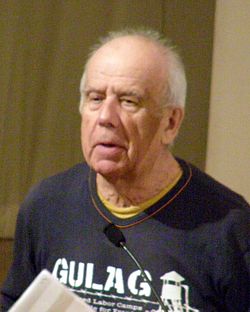You can help expand this article with text translated from the corresponding article in Estonian. Click [show] for important translation instructions.
|
Mart-Olav Niklus | |
|---|---|
 | |
| Born | September 22, 1934 |
| Nationality | Estonian |
| Occupation(s) | Ornithologist and politician |
Mart-Olav Niklus (born 22 September 1934 Tartu) is an Estonian ornithologist, dissident, and politician. He was a member of VII Riigikogu. [1]